Hydrographic Surveyor - Job Demand Analysis
| Division | Coordinator General |
| Branch | Chief Operations Office |
| Assessment locations | Rozelle depot |
| Publication date | 23/04/2024 |
Role Summary
Hydrographic surveyors from Transport for NSW carry out hydrographic surveys of navigable waters including inland waterways, coastal rivers and entrance bars to support safe navigation, environmental monitoring and dredging works.
Exposure To Critical Risks
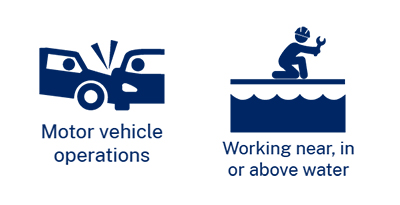
Task Demand Summary
Task | Physical | Psychological | Environmental |
|---|---|---|---|
Administrative work - 50% |
|
|
|
Vessel operations - 25% |
|
|
|
Surveying work - 15% |
|
|
|
Regional driving - 5% |
|
|
|
Vessel cleaning - 3% |
|
|
|
PWC Operations - 2% |
|
|
|
Overall Demand |
|
|
|
Whole Job Physical Demands Summary
| Physical demands | Frequency1 | Comments | ||||
|---|---|---|---|---|---|---|
1. Whole Body Movement | ||||||
| N | R | O | F | C | ||
| Sitting | X | Whilst performing administrative tasks, operating vessel, vehicle and PWC. | ||||
| Standing | X | Whilst operating vessel. and whilst cleaning vessel. | ||||
| Walking | X | Whilst cleaning vessel. | ||||
| Kneeling/squatting | X | |||||
| Climbing - Ladder | X | |||||
| Climbing - Stairs | X | |||||
2. Lower Back Movement | ||||||
| N | R | O | F | C | ||
| Bending forwards | X | Whilst cleaning vessel. | ||||
| Stooping | X | |||||
| Bending backwards | X | |||||
| Twisting/side bend | X | |||||
3. Neck Movement | ||||||
| N | R | O | F | C | ||
| Flexion | X | |||||
| Extension | X | |||||
| Rotation | X | Whilst operating vessel, vehicle and PWC. | ||||
4. Upper Limb Movement | ||||||
| N | R | O | F | C | ||
| Wide grip | X | Whilst operating vessel, vehicle and PWC. Grasping cleaning tools. | ||||
| Fine grip | X | |||||
| Forward reach | X | Whilst operating vessel, vehicle and PWC. | ||||
| Overhead reach | X | |||||
| Side reach | X | |||||
5. Weights and Forces | ||||||
| N | R | O | F | C | ||
| Floor (kg) | 20 | Surveying equipment/devices. Leg drive, grip and core activation whilst operating PWC. | ||||
| Bench (kg) | ||||||
| Shoulder (kg) | ||||||
| Above shoulder (kg) | ||||||
| Carrying - Unilateral (kg) | 13 | Surveying equipment/devices. | ||||
| Carrying - Bilateral (kg) | ||||||
| Pushing (kg) | ||||||
| Pulling (kg) | 15 | Surveying equipment/devices. | ||||
1: Never 0%; Rare 1 - 5%; Occasional 6 - 33%; Frequent 34 - 66%; Constant 67 - 100%
Whole Job Psychological Demands Summary
| Psychological demands | Frequency1 | Comments | ||||
|---|---|---|---|---|---|---|
1. Quantitative Demands | ||||||
| N | R | O | F | C | ||
| Fast work pace or significant time pressure | X | |||||
| Low job autonomy/control | X | |||||
| Repetitive or monotonous tasks | X | Administrative tasks, operating vessel, vehicle. Conducting surveying work. Monotony/repetitiveness of cleaning vessel. | ||||
| Minimal training/education available | X | |||||
| Minimal tools/resources available | X | |||||
2. Cognitive Demands | ||||||
| N | R | O | F | C | ||
| Requirement to keep focus on multiple items at once | X | Whilst operating vessel, vehicle and PWC. Conducting survey work on water. | ||||
| Requirement for sustained attention/vigilance | X | Whilst operating vessel, vehicle and PWC. Conducting survey work on water. | ||||
| Requirement to make difficult or quick decisions | X | Whilst operating vessel, vehicle and PWC. Conducting survey work on water. | ||||
3. Emotional Demands | ||||||
| N | R | O | F | C | ||
| Exposure likelihood to traumatic events | X | |||||
| Customer facing or interacting with the public | X | |||||
| Requirement to hide emotional feelings | X | |||||
| Requirement for working in isolation | X | |||||
1: Never 0%; Rare 1 - 5%; Occasional 6 - 33%; Frequent 34 - 66%; Constant 67 - 100%
Whole Job Environmental Demands Summary
| Environmental demands | Frequency1 | Comments | ||||
|---|---|---|---|---|---|---|
1. Physical Environment | ||||||
| N | R | O | F | C | ||
| Uneven, sloped or slippery terrain | X | Slippery surfaces when cleaning vessel. | ||||
| Hand Arm Vibration | X | Whilst operating PWC. | ||||
| Whole Body Vibration | X | Whilst operating PWC. | ||||
| Poor lighting | X | |||||
2. Elemental Exposure | ||||||
| N | R | O | F | C | ||
| Working in heat (>30C) | X | |||||
| Working in cold (<10C) | X | |||||
| Emergency weather conditions/events | X | |||||
3. Hazardous Exposure | ||||||
| N | R | O | F | C | ||
| Dust or other airborne contaminants | X | |||||
| Noise | X | Whilst operating PWC. | ||||
1: Never 0%; Rare 1 - 5%; Occasional 6 - 33%; Frequent 34 - 66%; Constant 67 - 100%
Task 1: Administrative work - 50%
Physical demand | Psychological demand | Environmental demand |
|
|
|
Task Description
Hydrographic surveyors spend 50% of the role working at a computer workstation to analyse, collate and report surveying data.
Key Demands
Sitting (C), Fast work pace or significant time pressure (O), Repetitive or monotonous tasks (C), Requirement for sustained attention/vigilance (O)

Task 2: Vessel operations - 25%
Physical demand | Psychological demand | Environmental demand |
|
|
|
Task Description
- One Hydrographic Surveyor operates vessel across waterways
- Requirement to travel across waterways to specific areas that require surveying
- Requirement for pre-start check of engine, oil etc.
Key Demands
Sitting (C), Rotation (O), Wide grip (C), Requirement to keep focus on multiple items at once (F), Requirement for sustained attention/vigilance (F), Requirement to make difficult or quick decisions (F), Exposure likelihood to traumatic events (R), Uneven, sloped or slippery terrain (O), Working in heat (>30C) (O), Working in cold (<10C) (O), Emergency weather conditions/events (R)
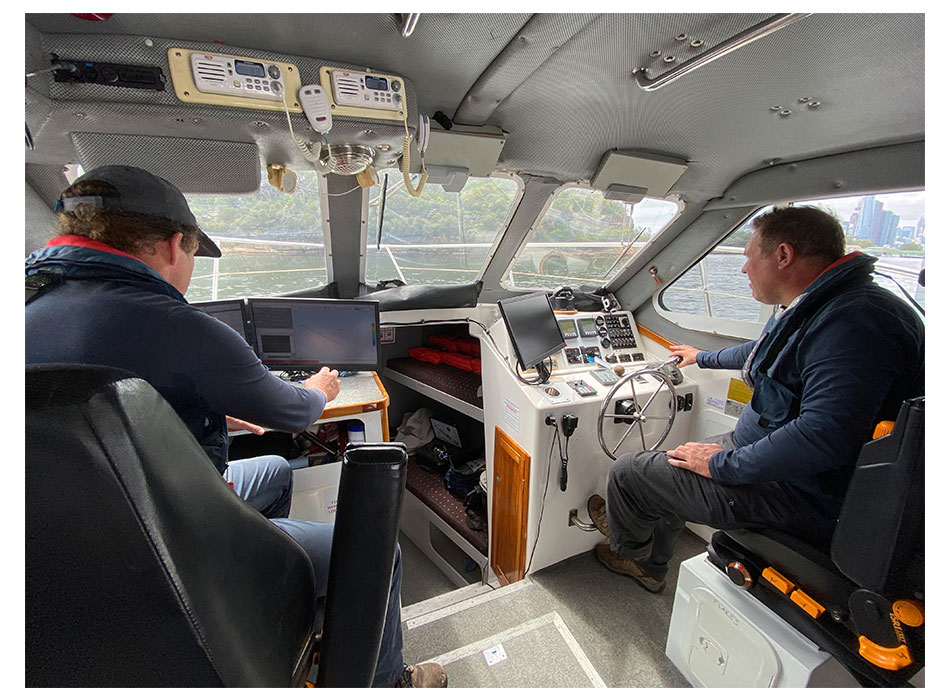
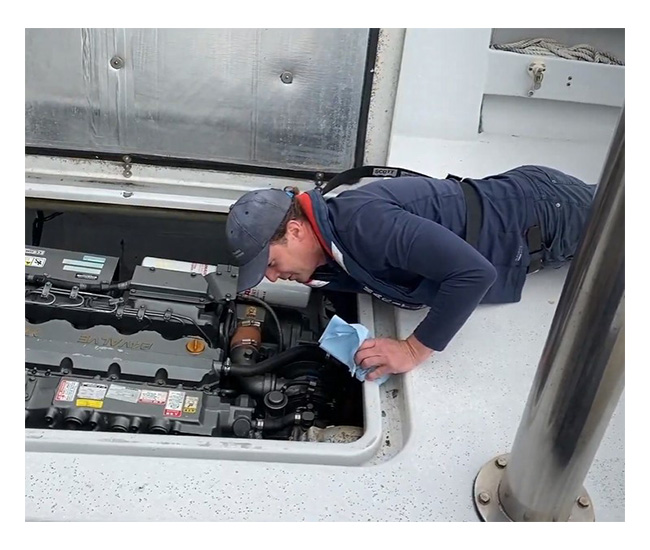
Task 3: Surveying work - 15%
Physical demand | Psychological demand | Environmental demand |
|
|
|
Task Description
- Whilst hydrographic surveyors rotate operating the vessel, the other 1-2 workers will conduct surveying tasks
- Surveying includes setting up of single or multi beam devices, using onboard surveying software on a laptop, tracking and monitoring of data.
Key Demands
Climbing - Stairs (O), Requirement to keep focus on multiple items at once (F), Requirement for sustained attention/vigilance (F), Requirement to make difficult or quick decisions (O), Uneven, sloped or slippery terrain (O), Working in heat (>30C) (O), Working in cold (<10C) (O), Noise (O)
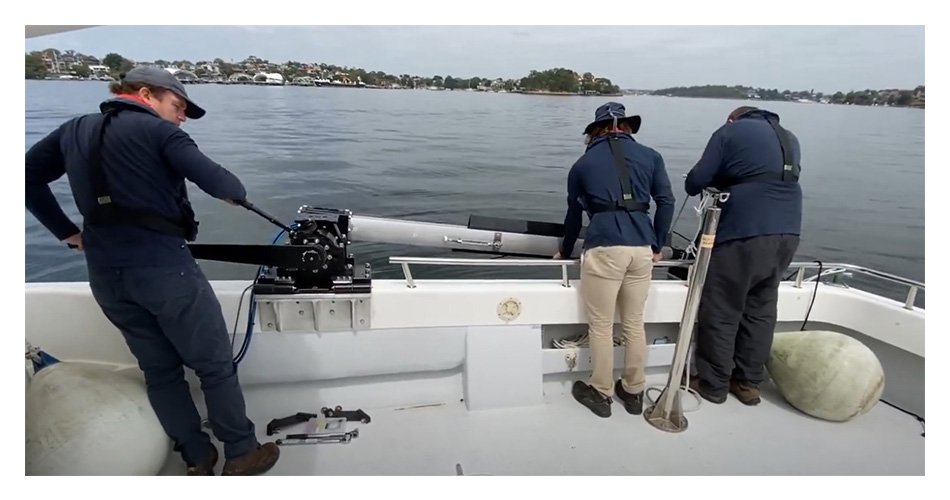

Task 4: Regional driving - 5%
Physical demand | Psychological demand | Environmental demand |
|
|
|
Task Description
- Regional travel and work conducted ~1/month
- Requires medium to long distance driving/travel
- Hydrographic surveyors work in group of 3
Key Demands
Sitting (C), Rotation (O), Wide grip (C), Forward reach (C), Repetitive or monotonous tasks (C), Requirement to keep focus on multiple items at once (O), Requirement for sustained attention/vigilance (F), Requirement to make difficult or quick decisions (O), Exposure likelihood to traumatic events (R), Emergency weather conditions/events (R)

Task 5: Vessel cleaning - 3%
Physical demand | Psychological demand | Environmental demand |
|
|
|
Task Description
- Using a garden hose either a free hose or a mounted retractable reel to rinse vessels after each use.
- Hose may need to be dragged into position.
- Internal cleaning is completed once per month and involves using a small hand-held vacuum cleaner and wiping internal surfaces.
Key Demands
Twisting/side bend (O), Uneven, sloped or slippery terrain (F)
Task 6: PWC Operations - 2%
Physical demand | Psychological demand | Environmental demand |
|
|
|
Task Description
- Workers take PWC (personal watercraft – jet ski) out 6-8 times per year for 3-4 days at a time
- Operate mostly at 4-5 knots
- Equipment is attached at jetty or on trailer
- PWC is operated by worker around pre-determined areas for surveying purposes
Key Demands
Sitting (C), Twisting/side bend (O), Rotation (F), Wide grip (C), Requirement to keep focus on multiple items at once (F), Requirement for sustained attention/vigilance (F), Requirement to make difficult or quick decisions (F), Exposure likelihood to traumatic events (R), Requirement for working in isolation (O), Hand Arm Vibration (F), Whole Body Vibration (F), Working in heat (>30C) (O), Working in cold (<10C) (O), Noise (F)
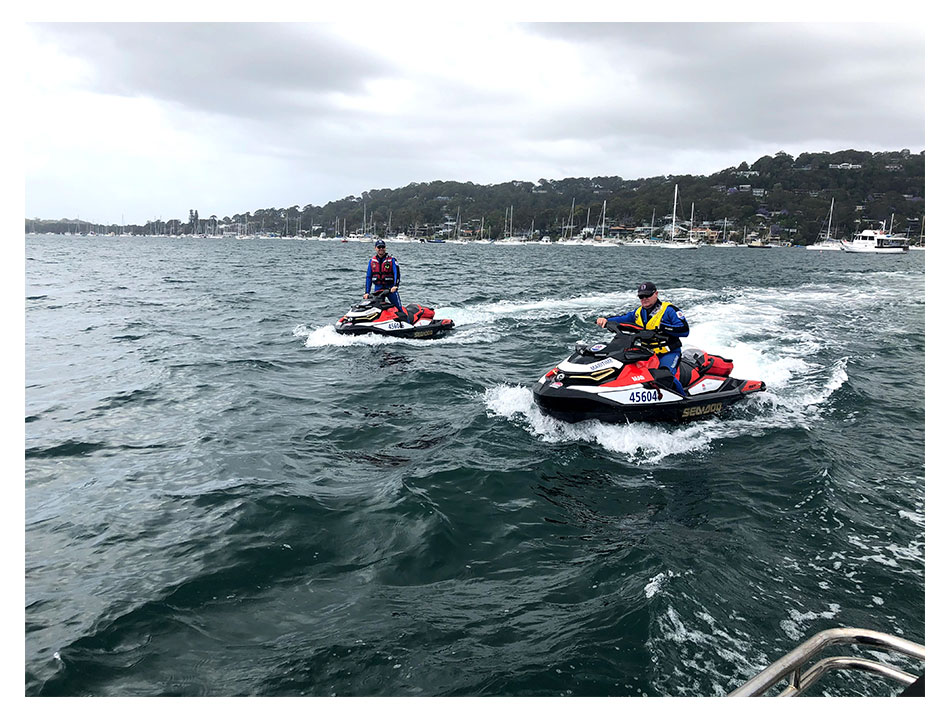
Key information
Demand rating is calculated via an algorithm based upon the relative weighting and frequency of the physical, environmental and psychological sub-tasks (e.g. squatting has a higher weighting than standing or walking).
This data may vary depending on production rates, changes in design or work organisation and staffing levels. This report was prepared by a trained and qualified health and safety professional within the TfNSW Occupational Health Team and reviewed by relevant Health and Safety, and operational stakeholders.
JDAs are periodically updated by the TfNSW Occupational Health Team or sooner where significant changes have been identified. For the latest version of this JDA, please always refer to this link rather than saving an offline copy.
For further information please contact occupational.health@transport.nsw.gov.au.
